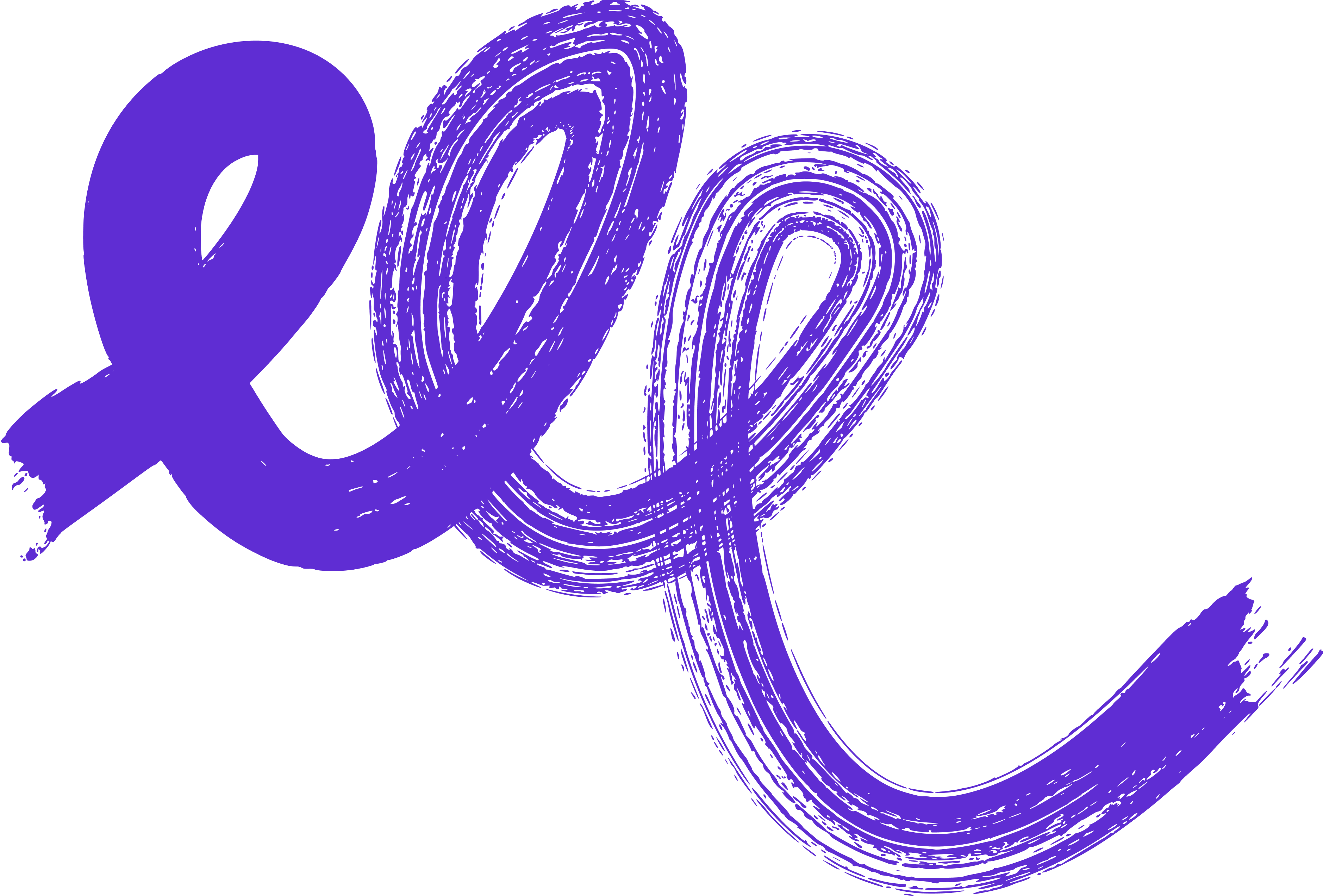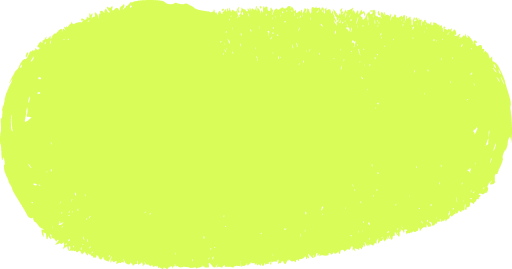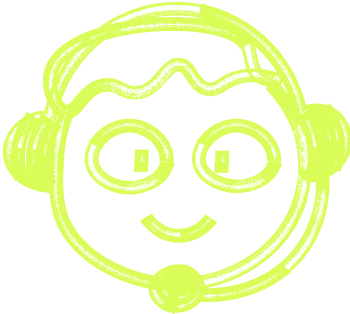🌍 All
About us
Digitalization
News
Startups
Development
Design
Crucial UX Research Methods to Understand Users Better
Marek Pałys
Sep 18, 2023・8 min read
Table of Content
The Most Common Types of User Research
Top UX Research Methods and When to Use Them
Qualitative vs. Quantitative
Descriptive Research
Evaluative Research
What Results Can I Expect from UX Research?
Behavioral Analytics
Which is the Best UX Research Type?
When to Conduct User Interviews
When It's Just Enough Research
Focus Groups
Diary Study
When to Conduct Field Studies
When to Conduct Diary Studies
In-Depth Interview (IDI)
Pick a Method that Fits Your Needs
On-Site Survey
When to Conduct Focus Group
How to Choose the Right User Experience Research Method
When to Conduct Tree Testing
When to Conduct Card Sorting
When to Conduct Surveys
Usability Testing
Define the Goals and Problems
What is the Best Research Methodology for User Experience Design?
Build Products with Users, Not Just for Them
Consider the Type of Insights Required
Product Tip ✨
When to Conduct Five-Second Testing
Transform Insights from User Testing into Impactful Products
FAQs:
User Experience (UX) design is an ever-evolving field that constantly seeks to understand and cater to the changing preferences and needs of users. UX research methods play an integral part in this process, enabling designers to create products that resonate well with their target audience. Let's delve deeper into these methods and answer some frequently asked questions to give you a comprehensive view.
The  Most Common Types of User Research
Most Common Types of User Research
- User Interviews: Conduct user interviews to gather qualitative data directly from the target users. User interviews can help you understand the user behavior patterns and preferences.
- Focus Groups: Focus groups are discussions among a group of users to collect data and insights on user attitudes towards a product or feature.
- Surveys: Utilize surveys to gather quantitative data from a larger group of users to analyze user satisfaction and gather statistical data.
- Usability Testing: Conducting usability testing allows you to understand how a user performs tasks on your interface and helps identify usability issues.
- Behavioral Analytics: Use tools like Google Analytics to study web analytics that provides insights into user behaviors and preferences based on their online actions.
Top UX Research Methods and When to Use Them
- Early Stages of Design Process: In the early stages of the design process, you can employ methods like task analysis and diary studies to understand the user needs and their journey.
- Development Process: During the development process, usability tests and focus groups can be essential to gather feedback from user groups and make necessary adjustments.
- Redesign Process: When in the redesign process, in-depth understanding through user stories and conducting ux research methods like card sorting and tree testing can be beneficial.
Qualitative vs. Quantitative
Qualitative Research:
- In-Depth Interview (IDI): Conducting IDI helps in understanding user experiences and user needs at a deeper level.
- Diary Study: Diary study helps to observe users behavior in their natural environment over a period of time.
- Focus Group Discussions: Organizing focus group discussions can provide insights into user attitudes and experiences.
Quantitative Data:
- Surveys: Conduct surveys to collect numerical data on user preferences and experiences.
- Web Analytics: Use web analytics tools to analyze user engagement and trends based on search queries.
- Usability Tests: Conduct usability tests to gather data on how efficiently a user performs tasks on the interface.
 Descriptive Research
Descriptive Research
- User Stories: Create user stories to portray the various types of users interacting with your product.
- User Journey Mapping: Develop maps to depict the user journey from the first interaction to achieving their goal.
- Task Analysis: Conduct task analysis to dissect and understand every action that users undertake during their interaction with the product.
Evaluative Research
Usability Testing: Regular usability testing can provide valuable insights into the ease of use and identify areas for improvement.
User Testing: Conduct user testing to evaluate the overall user experience and user satisfaction with your product.
A/B Testing: Utilize this UX research method to compare two versions of a webpage or app against each other to determine which one performs better.
What Results Can I Expect from  UX Research?
UX Research?
- Better User Interface: UX research can aid UX designers in creating an intuitive information architecture and better user interface.
- Improved User Engagement: Through user testing and usability testing, one can enhance user engagement by refining the elements that users interact with.
- Increased User Satisfaction: Implementing the right UX research methods ensures that the developed or redesigned process meets user expectations, thus increasing user satisfaction.
Behavioral Analytics
Utilize behavioral analytics in UX research to:
- Analyze user actions and understand their behavior patterns.
- Understand how users interact with various features using tools like Google Analytics.
- Make data-driven decisions to improve the overall user experience.
Which is  the Best UX Research Type?
the Best UX Research Type?
Choosing the best UX research type depends on several factors including the stage of the design process, the nature of the product, and the type of insights required. Here are a few pointers:
- For Initial Understanding: At the start, focus on qualitative research to understand user behaviors and attitudes.
- For In-depth Analysis: As you progress, opt for descriptive research to gain an in-depth understanding of how users interact with your product.
- For Product Refinement: In later stages, evaluative research can help in refining the product based on user feedback and usability testing results.
When to Conduct  User Interviews
User Interviews
Conduct user interviews at different stages of the research process to:
- Understand user needs and preferences during the early stages.
- Gather user stories and feedback on new features or existing product enhancements.
- Understand user behaviors and attitudes towards different aspects of your product or service.
When It's Just Enough Research
Determining when it's just enough research can sometimes be challenging. However, consider the following factors:
- When the collected data starts to repeat itself, indicating a saturation point.
- When you have gathered enough insights to make informed decisions.
- When the research meets the defined goals and problems identified at the beginning of the research process.
 Focus Groups
Focus Groups
Focus groups can be a critical UX research method in understanding user attitudes and gathering diverse perspectives. Conduct focus groups:
- During the initial phases to understand user needs and expectations.
- In the middle stages to validate the design process and gather insights on user interactions.
- Towards the end to collect feedback on the usability and functionality of the product.
 Diary Study
Diary Study
Implement a diary study as a UX research method to:
- Understand daily user interactions and experiences over a period of time.
- Gather qualitative data on user behaviors and attitudes in their natural environment.
- Identify trends and patterns in how users interact with your product in different scenarios.
When to Conduct  Field Studies
Field Studies
Field studies should be conducted to:
- Observe users in their natural environment and understand their behavior patterns.
- Gather data on how users interact with your product in real-world settings.
- Understand the contextual factors that influence user interactions and experiences.
When to Conduct  Diary Studies
Diary Studies
It is beneficial to conduct diary studies:
- In the early stages to understand user needs and daily interactions.
- During the development process to gather ongoing feedback and insights.
- As part of the iterative design process to continually refine the product based on user experiences.
 In-Depth Interview (IDI)
In-Depth Interview (IDI)
Implement IDI as a UX research method to:
- Gain deep insights into user behaviors, preferences, and motivations.
- Understand the individual user's journey and the challenges they face.
- Collect data on user satisfaction and areas of improvement from a detailed perspective.
Pick a Method that Fits Your Needs
When selecting the right UX research method, consider:
- The stage of the design or redesign process.
- The nature of the product and the target audience.
- The type of insights required - qualitative data for understanding user attitudes or quantitative data for statistical analysis.
 On-Site Survey
On-Site Survey
Implementing an on-site survey can help to:
- Understand the users' behavior and gather direct feedback from users interacting with your product on-site.
- Collect data on user satisfaction and areas where improvements can be made.
- Gather insights into the user experience and identify potential usability issues.
When to Conduct  Focus Group
Focus Group
Conduct a focus group discussion:
- In the early stages of the design process to brainstorm and gather diverse perspectives.
- In the middle stages to validate concepts and gather feedback on prototypes.
- Towards the end of the development process to evaluate the usability and functionality of the product.
How to Choose  the Right User Experience Research Method
the Right User Experience Research Method
- Understand Your Goals: Clearly define the goals and problems you aim to address through the research.
- Consider Your Audience: Understand your target users and tailor your research methods to suit their preferences and behaviors.
- Balance Quantitative and Qualitative Data: Depending on the stage of the design process, choose methods that offer a balance between quantitative data and qualitative insights.
When to Conduct  Tree Testing
Tree Testing
Opt for tree testing:
- In the early stages to evaluate the information architecture and understand how users navigate through your site.
- During the iterative design process to continually refine the structure based on user feedback.
- As a validation step before implementing changes to ensure that the proposed alterations enhance the user experience.
When to Conduct  Card Sorting
Card Sorting
Implement card sorting:
- In the initial stages to organize content in a way that is intuitive to users.
- As a tool during the redesign process to reevaluate and improve the existing structure.
- To gather user feedback on the information architecture and make necessary adjustments.
When to Conduct  Surveys
Surveys
Conduct surveys:
- To gather quantitative data on user preferences and experiences.
- To understand user satisfaction and areas where improvements can be made.
- To collect statistical data that can guide data-driven decisions during the design process.
 Usability Testing
Usability Testing
Implement usability testing:
- In the development process to identify potential usability issues and make necessary adjustments.
- During the redesign process to ensure that the changes enhance the user experience.
- As a continuous process to keep refining the product based on user feedback and usability tests results.
Define the Goals and Problems
Setting clear goals and identifying potential problems are paramount steps in the UX research process. Here's how to go about it:
- Identify the User Needs: Utilize user interviews and focus groups in the early stages to pinpoint the exact needs and preferences of your target audience.
- Define the Problem Statement: Based on insights gathered from user interviews and surveys, create a comprehensive problem statement to address during the design process.
- Set Achievable Goals: Based on the problem statement, set realistic goals that aim to enhance the user experience through improved usability testing and interaction design.
What is the Best Research Methodology for User Experience Design?
Choosing the best research methodology depends heavily on the specifics of your project and the insights required. Here's how to pick the best method:
- Comprehensive Analysis: In the initial phases, focus on qualitative research activities to gather in-depth understanding of user attitudes and behaviors.
- Statistical Analysis: As you progress, integrate quantitative data analysis methods like surveys to collect numerical data and derive statistically significant insights.
- Iterative Approach: Throughout the design process, adopt an iterative approach to continually refine your product based on feedback from usability testing and user testing.
Build Products  with Users, Not Just for Them
with Users, Not Just for Them
Creating a product that resonates well with users involves building it with their inputs, rather than just for them. Here are the steps:
- Involve Users in the Development Process: From the early stages, involve users in the development process through focus groups and user interviews to ensure their needs and preferences are integrated into the product.
- Iterative Feedback: Continually gather feedback from target users throughout the design or redesign process to make necessary adjustments and enhance the user experience.
- Testing and Adjustments: Utilize usability testing extensively to refine the product based on user feedback and usability tests results.
Consider the Type of Insights Required
Understanding the type of insights required is critical in selecting the right UX research methods. Here’s how:
- For User Behavior Insights: Employ behavioral analytics and diary studies to understand users' behavior patterns in their natural environment.
- For Understanding User Needs: Use methods like user interviews and focus group discussions to gather qualitative data on user needs and preferences.
- For Gathering Statistical Data: Utilize surveys and web analytics to gather quantitative data that provides insights into user satisfaction and behavior patterns.
Product Tip ✨
When striving to develop a product that meets user expectations and provides an exceptional user experience, it's vital to:
- Focus on User-Centric Design: Ensure that the design process is centered around the user needs and preferences gathered through extensive user research methods.
- Collaborate with UX Designers: Collaborate closely with UX designers throughout the research process to integrate the insights gained into the development process seamlessly.
- Utilize Advanced Tools: Make use of advanced tools like Google Analytics for behavioral analytics to gather insights into users' interaction patterns and preferences.
When to Conduct  Five-Second Testing
Five-Second Testing
Five-second testing is a quick and efficient method to assess the first impression of your product. Conduct this test:
- During Initial Design Phases: To gauge the initial reactions and impressions of users towards your product design or features.
- For Evaluating Visual Appeal: To assess the visual appeal and intuitive information architecture of your website or app.
- Before Launching New Features: To gather quick feedback on new features or modifications before the official launch.
Transform Insights from User Testing into  Impactful Products
Impactful Products
Turning the insights gathered through user testing into impactful products involves a systematic approach. Here's how to go about it:
- Incorporate Feedback: Actively integrate the feedback and insights gathered from user testing into the development process to enhance the user experience.
- Collaborative Effort: Work closely with UX designers, developers, and stakeholders to ensure that the insights are effectively translated into the product features and design.
- Continuous Improvement: Adopt a continuous improvement approach, utilizing the insights from user testing and usability testing to refine and enhance the product over time.
We hope this comprehensive guide has provided you with valuable insights into the crucial UX research methods and their implementation. Remember, the goal is to understand users better and build products that cater to their needs and preferences effectively. Good luck!
 FAQs:
FAQs:
- What are UX research methods? UX research methods are various techniques used to study and understand the preferences and behaviors of users to create products that offer an enhanced user experience.
- What is the importance of UX research methods in product design? Implementing UX research methods helps in understanding user needs, enhancing the user interface, improving engagement, and increasing user satisfaction, ultimately leading to a more successful product.
- What are some common UX research methods? Some common UX research methods include user interviews, focus groups, surveys, usability testing, and behavioral analytics.
- When should I conduct user interviews? User interviews are generally conducted in the early stages to understand user needs and preferences, and they can also be used at various stages to gather feedback on new features or product enhancements.
- What is the role of behavioral analytics in UX research? Behavioral analytics helps in analyzing user actions and understanding their behavior patterns, which aids in making data-driven decisions to enhance the overall user experience.
- How do I choose the right UX research method? Choosing the right UX research method depends on various factors including the stage of design, the nature of the product, and the insights required. You should also consider the balance between qualitative and quantitative data.
- What is the difference between qualitative and quantitative UX research? Qualitative research focuses on understanding user attitudes and experiences in-depth, while quantitative research involves collecting numerical data to analyze user preferences and experiences statistically.
- When is it ideal to conduct diary studies in UX research? Diary studies are beneficial in the early stages to understand daily user interactions, during development to gather ongoing feedback, and as a part of iterative design to continually refine the product based on user experiences.
- How can I implement A/B testing in UX research? A/B testing involves comparing two versions of a webpage or app against each other to determine which one performs better. It helps in refining the product based on user feedback and usability testing results.
- Can focus groups aid in the UX design process? Yes, focus groups can be a critical method in understanding user attitudes and gathering diverse perspectives, especially during initial phases, middle stages for validation, and towards the end for feedback on usability and functionality.
- What are user stories and how do they assist in UX research? User stories portray various types of users interacting with your product, helping to create a product that resonates with different user personas.
- What is the purpose of user journey mapping in UX research? User journey mapping depicts the user's journey from the first interaction to achieving their goal, helping to understand and enhance the overall user experience.
- How can task analysis benefit the UX research process? Task analysis involves dissecting and understanding every action that users undertake during their interaction with the product, which assists in identifying potential areas for improvement.
- What results can I expect from implementing UX research methods? Implementing UX research methods can lead to a better user interface, improved user engagement, and increased user satisfaction.
- How can surveys contribute to UX research? Surveys help in collecting quantitative data on user preferences and experiences, offering statistical data that can guide data-driven decisions during the design process.
- What is the role of usability testing in UX research? Usability testing helps identify potential usability issues and make necessary adjustments, enhancing the ease of use and overall user experience.
- When should I conduct field studies in UX research? Field studies are conducted to observe users in their natural environment and understand their behavior patterns, usually beneficial during the initial stages to gather realistic data on user interactions.
- What is the significance of in-depth interviews (IDI) in UX research? IDIs provide deep insights into user behaviors, preferences, and motivations, helping to understand the individual user's journey and challenges they face.
- How can on-site surveys benefit UX research? On-site surveys help in understanding user behavior and gathering direct feedback from users interacting with your product on-site, providing insights into user experience and identifying potential usability issues.
- What factors should be considered to determine when it's just enough research? Determining when it's just enough research involves considering factors like reaching data saturation point, having enough insights to make informed decisions, and meeting the defined goals and problems identified at the beginning of the research process.

 Don't miss a beat - subscribe to our newsletter
Don't miss a beat - subscribe to our newsletterYou may also  like...
like...

Finding the Sweet Spot: Balancing User Experience and Minimum Viable Product in Lean Startups
Lean startups must balance UX and MVP to achieve market success. This guide explores strategies for aligning user satisfaction with efficient product development.
Alexander Stasiak
Dec 03, 2024・12 min read

Understanding the Impact of Cognitive Psychology in UX Design
Cognitive psychology informs UX design by providing insights into how users perceive, process, and interact with information. Learn how cognitive principles, such as memory, attention, and biases, are applied to create intuitive and satisfying user experiences.
Marek Pałys
Dec 02, 2024・12 min read

Unlocking Success: The Importance of UX in Website Redesign for Conversions
A seamless user experience (UX) is the cornerstone of successful website redesigns, directly impacting conversion rates. By prioritising intuitive navigation, mobile responsiveness, and user engagement, businesses can create websites that attract visitors and convert them into loyal customers. Explore how UX strategies drive better results in website redesigns.
Alexander Stasiak
Oct 14, 2024・13 min read




